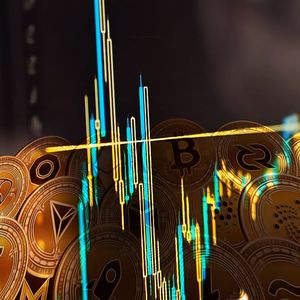Summary Mastercard (MA) stands out as a capital-light, compounding business at the core of financial infrastructure, making it a key 'rails and tollbooths' portfolio holding. MA's international growth and infrastructure role often justify its premium over Visa (V), though recent returns have lagged the broader market. The current bull market's AI focus and premium valuations have sidelined MA and V, but these factors don't fully explain their underperformance. Stablecoins are emerging as a significant factor impacting MA and V, presenting both challenges and opportunities for the digital payments sector. Why Mastercard Underperformed Last week, we started focusing on an area that has seemingly been left behind by the bull market and that faces some pressure due to a set of concerns that investors have. I am talking about the financial services industry, and we already talked about Fair Isaac ( FICO ) and how I downgraded it to a sell after revising my research. We then assessed Equifax ( EFX ), which is surely set to benefit and even scavenge on FICO's regulatory woes. But the outcome was that, although extremely interesting, the stock presents a stretched valuation . Our third step was towards credit rating agencies, and S&P Global ( SPGI ) was the one we analyzed. After FactSet announced it was seeing weaker data demand, S&P Global sold off and entered what I considered buy territory . As a result, I swapped my stake in Fico for S&P Global. All the companies we are considering have some similarities. They positioned themselves at important crossroads of the financial system, sometimes becoming a true financial infrastructure play. Under this perspective, we are dealing today with perhaps the best example of this, as we will talk about Mastercard ( MA ) and digital payments. As I explained in the past, I like Mastercard because it runs a capital-light business that can compound its annual FCF and earnings at a 10+% pace. It is part of my "rails and tollbooths" portfolio, where I try to buy infrastructure plays that whoever is part of the economy needs to use. Moreover, Mastercard has a growing international business that often makes it slightly more attractive than Visa ( V ), explaining why it trades at higher multiples. As we see, since April, the market has returned almost 20%, while Mastercard has returned only 4.8% and Visa has even delivered negative returns of 1.3%. Data by YCharts What is happening? Well, one explanation is that the current bull market is AI-driven, and MA and V are not the first names we think of when we consider AI. The second reason could be that these stocks needed to take a breather, given their premium valuations. Both takes are worthy of consideration, but they don't fully explain what is going on. The real driver of Mastercard and Visa's recent underperformance is stablecoins. Stablecoins: State Of the Art As the FED wrote in a January 2022 paper, "stablecoins are digital currencies that peg their value to an external reference, typically the U.S. dollar". More academically, we could use the definition of Dionysopoulos and Urquhart published on Economics Letters in November 2024: "stablecoins represent offshore US liabilities that primarily operate outside of the US regulatory regime". By being pegged to the USD, it offered price stability, offering a reliable way to store money for transaction or investing purposes. After the Luna-Terra collapse in 2022, regulators started imposing stricter rules, asking for more transparency on reserves and redemption rules. The last step was the recent Genius Act, which requires that stablecoin issuers have 100% reserve backing with US dollars or T-bills and release monthly disclosures on their reserves. This act should increase demand for T-bills, probably strengthening the role of the U.S. dollar as a reserve currency around the world. So, stablecoins can be considered an "on/off ramp" between fiat currencies and cryptocurrencies. They play the role of a bridge and can even be safe havens in countries where inflation is out of control. What are their benefits? As a recent piece from McKinsey states , there are five main advantages: payment speed, low transaction costs, better tracking, global access, and smart contract innovation. All this is great. But why has the stablecoin market surged to a jaw-dropping size of $300B ? Well, stablecoins offer one of the best ways for people to have access to global markets without needing a bank. Moreover, people can even earn a yield by either staking or lending their stablecoins. But the main use is linked to cryptocurrencies. People store in stablecoins the money they want to use to invest in crypto and store it when they sell and want to wait before opening a new position. When cryptos crash, stablecoins do rather well. One last step: how do stablecoin issuers such as Tether make money? It is pretty simple: they invest the money that people use to buy their tokens into U.S. Treasuries. In this way, the stablecoins are fully collateralized, and Tether earns a decent yield at almost no cost. As of July, Tether had over $127B in Treasuries , meaning it is one of the largest holders of U.S. debt in the world. In the first six months of the year, Tether made around $5.7B in net profit, mainly coming from interest payments from the U.S. government. What About Mastercard? Enough on stablecoins, for now. The topic is interesting and deserves a lot more, but we have to stick to our topic. What do stablecoins imply for Mastercard and traditional digital payment networks? What are the threats? The first one is lower volume in cross-border transactions, especially when considering B2B. However, there are two things to consider. First of all, the academic articles I pointed out above show that the larger portion of stablecoin volume is crypto-oriented and not for POS commerce. Secondly, Mastercard has not been idle. Mastercard has introduced blockchain technology and payment speed by launching its Multi-Token Network (MTN) . This allows tokenization in banking and tokenized deposits, allowing 24/7 fast interbank payments. Over a year ago, Mastercard connected its MTN to JPMorgan's Kinexys Digital Payments precisely to settle B2B transactions. Secondly, manual card entry will be slowly dismissed while one-click payments accelerate, thanks to the introduction of tokenization, which Mastercard developed to protect transaction data from hackers. Two months ago, Mastercard joined Paxos' Global Dollar Network, enabling in this way USDG, USDC, PYUSD, and FIUSD across its network . Paxos, for example, will thus allow any Mastercard institution to mint and distribute USDG. Moreover, through its program Mastercard Move, Mastercard will create a seamless opportunity for financial institutions and wallets to send cross-border payments through stablecoins. What does all this mean? In short, Mastercard is leveraging its infrastructure, showing how unique it is to bridge the traditional finance world with the new payment rails that are appearing. In other words, Mastercard keeps playing the role of the "switch" between rails and widens its ecosystem, offering valuable services to stablecoin flows such as fraud detection. We could say Mastercard is making sure that if payments are going to be disrupted by stablecoins, they will still flow through its pipes. We could consider it a smart move by an incumbent that wants to reinforce its dominant position, becoming even more "currency-neutral" and establishing itself as a bridge between old and new payment rails. As Michael Mieback, Mastercard's CEO, said during the last earnings call , the company simply views "stablecoins as another currency". To this extent, stablecoins might not be cannibalizing Mastercard's existing volume, but could be accretive. As Mastercard's CFO, Sachin Mehra, explained during the 2025 Goldman Sachs Communicopia Technology Conference , we learned that Mastercard will benefit from three different moments: on-ramp, off-ramp, and settlement. The way we're participating in stablecoins is by providing the on-ramp. So this is when consumers wish to purchase stablecoins; they use and leverage Mastercard products to make that happen. We act as -- like I said, we'll do the settlement of those stablecoins over our network if people wish to settle stablecoins. And we act as the off-ramp. The off-ramp is when if you're a holder of stablecoins and you wish to use them everywhere Mastercard is accepted, we're making our network available for you to be able to settle with merchants who may not be willing to accept stablecoins, who want only fiat currency, we will kind of handle that transition over from stablecoins, working with our partners, right, to give them access to be able to use it everywhere. So there's the on-ramp, there's the off-ramp, and then there's a settlement. At the end of the day, instead of moving money from one checking account to the other, Mastercard will help convert money into stablecoins and then stablecoins back into fiat currency. Now, let's zoom out a bit and look at Mastercard as a whole. Its two main business segments are Payment Network and Value-added Services and Solutions. We see that in Q2, the former accounted for 60% of total revenues, while the latter brought in the remaining 40%. When we consider that services are usually higher margins and uniquely tailored to customers' needs, I see it even more unlikely for Mastercard to disappear. MA Q2 2025 Earnings Presentation Mastercard's Valuation This article, as you have seen, hinges less on accounting and more on business strategy. However, as investors, we also have to try and translate all these thoughts into numbers that can help us evaluate Mastercard more precisely. My take is that stablecoins are not only not a threat to Mastercard, but could also lead to higher addressable flows, strengthening Mastercard's advantage based on its infrastructure. As Cerutti, Firat, and Perez-Saiz estimated in a recent paper , cost reduction across cross-border payments will impact remittances, with savings of $17B annualy, equal to 3.7% of total remittance flows. If MA captures even a few percentage points of these flows, we will see huge volume gains. Secondly, Mastercard could introduce its ecosystem into areas where traditional cards were scarce or even avoided, but where digital wallets are popular and widely used. Let's say that by 2030, Mastercard will have captured around $1T worth of stablecoin payments and charge a fee of 0.3%. We would have $3B in revenue. With an EBITDA margin that is usually around 62%, we are talking about $1.86B of incremental EBITDA. At a multiple of 20x, this adds another $32B to Mastercard's EV. Of course, the adoption curve is here the key variable, and take rates will be pressured. Right now, Mastercard's valuation remains an F because its fwd P/E is 35 and its fwd EV/EBITDA is 26. However, its growth pace is still brisk and usually stands in the mid-teens across all the main metrics. Mastercard's profitability is superb, with gross profit margins of 100%. What is truly outstanding about Mastercard is its FCF. This year, it could probably end above $16B. Moreover, it compounds at a fast pace of 10%-12%. This means that Mastercard can drive the stock up at a market-beating pace by keeping its organic growth track record even if its multiples don't expand further. Data by YCharts When I run my DCF, I use the following assumptions: this year's FCF will be $16.5B. For the next 5 years, Mastercard will grow its FCF at 12% annually. The perpetual growth rate will be 3%. The discount rate is Mastercard's WACC, which I calculate to be 7.92%. Well, the result is that Mastercard is worth around $551 a share, which is a 3% downside from where the price is at the time of writing. This means we are in fair price territory. With a company of such high quality, it is rare to find big discounts. As a result, I have a rule that in these cases, when we are in fair value territory, we can start buying to initiate or increase a position. This is what I will do this week: increase my stake in Mastercard because I believe that what caused investors to be concerned could actually be a strong tailwind going forward. Author, with data from SA













![Top Trusted Crypto Sportsbooks to Bet on AFC Champions League [BTC and Stablecoins Supported] Top Trusted Crypto Sportsbooks to Bet on AFC Champions League [BTC and Stablecoins Supported]](https://resources.cryptocompare.com/news/104/52480533.jpeg)
